Sago pudding with coconut milk is a famous dessert in Malaysia. Also commonly known as sago gula melaka, this sweet and creamy dessert only requires 3 ingredients, is easy to make and makes a perfect dessert after a hearty meal.
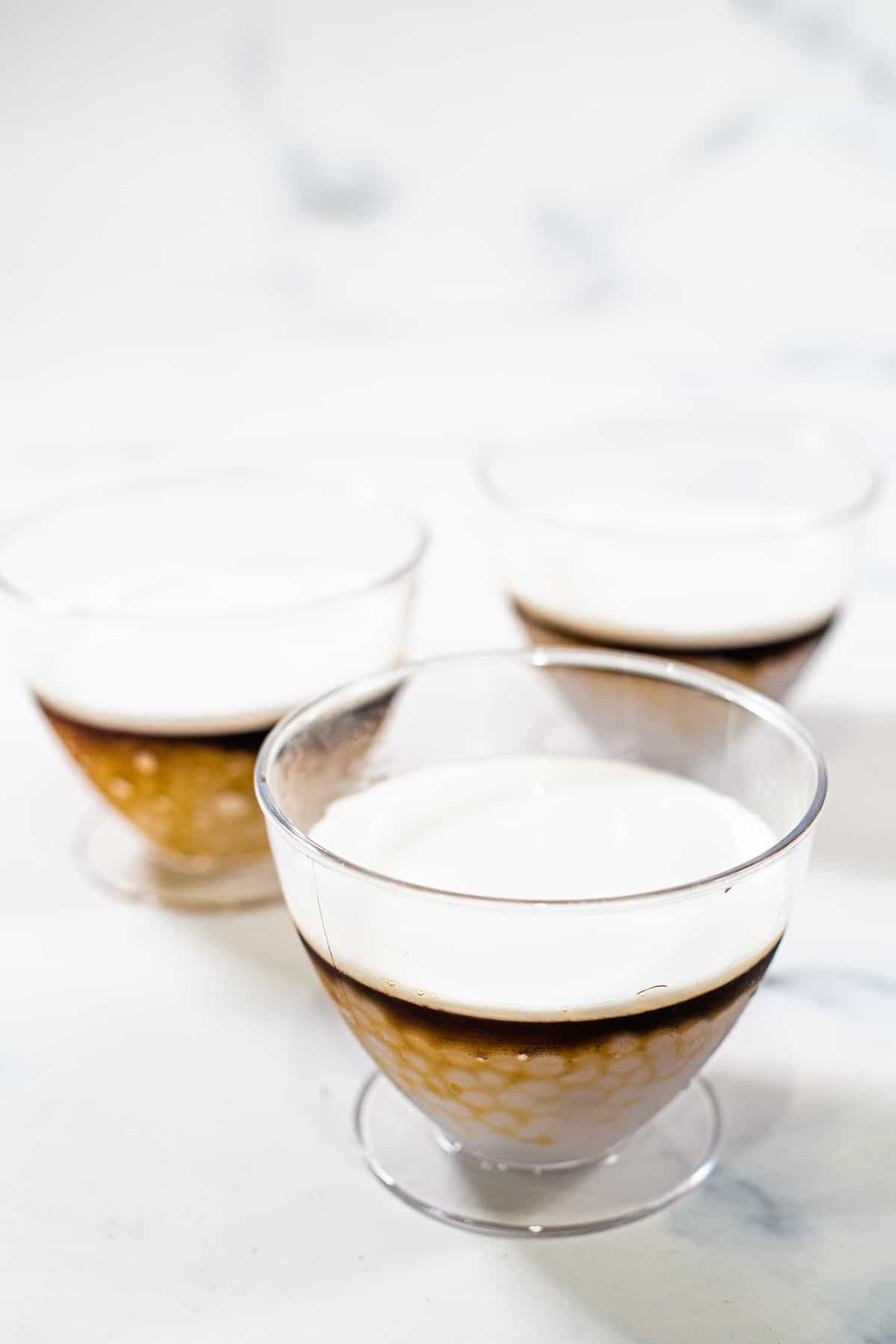
The pudding is typically served in small dessert bowls, with coconut milk and sugar syrup poured over cooked and molded sago. I choose to not mold my sago, instead, I filled it into small dessert cups and poured the gula melaka syrup and coconut milk on top. To eat the pudding, you either mix all the ingredients together or you simply scoop the sago along with some milk and palm syrup and enjoy it that way!
Either way, the syrup and coconut milk mixture add just the right balance of sweet flavor and creamy texture to the plain sago pudding, making this a super yummy sago dessert.
If you like this dessert, you should also try this durian mousse and ube leche flan. They make great Asian inspired desserts. And for more coconut and gula melaka based treats, you can try this coconut jelly, coconut loaf cake, coconut candy, pandan cookies with coconut and gula melaka and pineapple cheesecake with coconut.
Jump to:
❤️Why You Will Love This Recipe
- You only require 3 ingredients to make this simple pudding - sago, coconut milk and palm sugar.
- It is quick to make and can be enjoyed warm or chilled.
- The pudding is sweet and creamy and makes a perfect dessert after a hearty meal.
- Served in small individual dessert cups, this pudding is a perfect treat for parties and special occasions too.
What is Sago?
Sago pearls are tiny, starchy balls made from the sago palms (sago palm trees). They look almost like tapioca pearls but are white in color. The most common type of sago pearls are much smaller than tapioca pearls but the sizes can vary and some are as large as tapioca pearls.
Sago pearls are opaque white before cooking. Once cooked, they become translucent and chewy. They are widely used in Asian desserts in the Southeast Asia region.
Tapioca pearls, on the other hand, are made from the tapioca starch, a root vegetable (also called cassava root). These are often used in milk tea drinks. Tapioca pearls can come in small sizes like sago but these small tapioca pearls are not suitable for this sago pudding. In some parts of the world, tapioca pearls are also called sago.
This sago pudding is best made with the small sago pearls. You can find sago in your local Asian grocer stores.
What is Gula Melaka or Palm Sugar?
Gula Melaka, also known as palm sugar or coconut palm sugar, is a type of sugar made from the sap of the flower bud stem of the coconut palm or the sugar palm. It's commonly used in Southeast Asian cuisines, particularly in dishes from Malaysia, Singapore, Indonesia, and Thailand.
The sap is collected and boiled until it thickens, then poured into molds to harden. The result is a dark brown sugar with a rich caramel-like flavor and a hint of smokiness. Gula Melaka is often used in desserts, sweets, and beverages to add sweetness and depth of flavor.
📋Ingredients

- Sago pearls a.k.a sagu pearls - these are sold in different sizes. Choose the smallest.
- Palm sugar - also know as gula Melaka and is brown in color. This is the sweetener for the sago pudding.
- Coconut milk - gives the pudding a lovely creamy texture. Use the milk, not the water and not the coconut cream. Best to use full-fat coconut milk.
- Salt - enhances the taste.
- Water - to cook the sago and make the palm sugar syrup. Use filtered water.
*Refer to the recipe card below for full list of ingredients and exact quantities. For best results, use a digital kitchen scale where applicable*
🧾Substitution and Variations
- Gula Melaka can be substituted with simple brown sugar syrup by diluting the same amount of brown sugar with water until it forms a syrupy solution. While the sago pudding will still taste as good, it will not be the same as using palm sugar.
- Full fat coconut milk can be substituted with light coconut milk for a less creamy taste.
- For extra flavoring, you can add knotted pandan leaves into the sago when cooking. Discard the leaves once the sago is cooked.
This recipe has not been tested with other substitutions or variations. If you do try, please let me know in the comments section below!
👩🍳How to Make
Step 1: Cook the sago pearls. Measure water into a saucepan. Turn on the heat and bring the water to a boil. As soon as it starts boiling, add the sago pearls. Stir immediately to prevent them from clumping.
Note: Always boil the water first before adding the sago. This will immediately cook the outer layer of the sago and prevent the starch from the pearls from dissolving much.
Adjust the heat to low and continue to cook the sago. Keep stirring. As the sago cooks, the water will also turn starchy and you will not be able to see the pearls clearly. But you will be able to see dots of white in the solution.
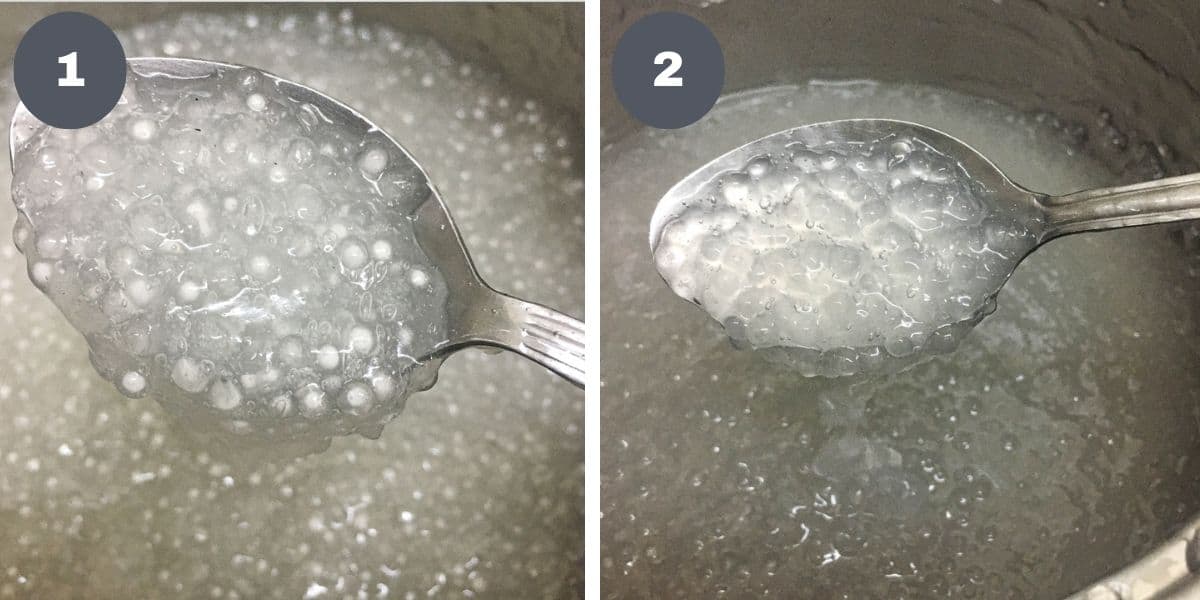
When the sago is almost cooked, you will see lesser of these dots and they will appear very tiny (image 1). At this stage, turn off the heat and cover the saucepan. Let the sago rest for about 10 to 15 minutes. It will continue to cook in the residual heat until fully transparent (image 2).
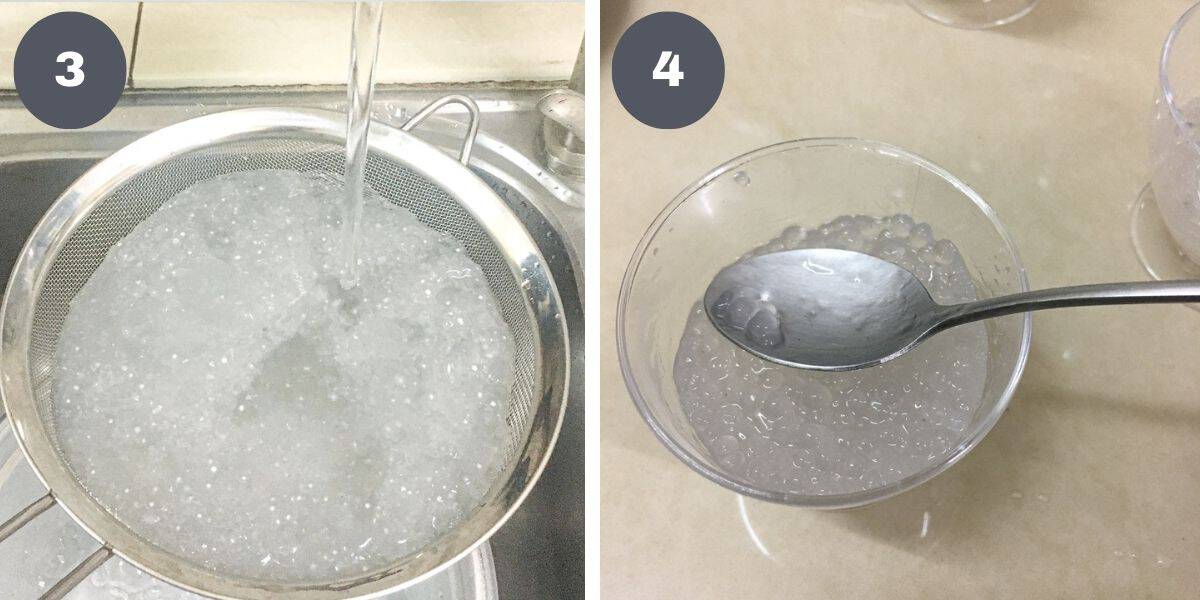
Transfer the cooked sago into a large sieve and run cold water through to remove all the excess starch (image 3). You should be able to see the pearls more clearly at this stage.
Leave the sago in the sieve for about 5 to 10 minutes to allow all the water to drain out Spoon the sago into the dessert cups and chill until ready to serve (image 4).
Step 2: Make the gula melaka syrup. Chop the palm sugar into small pieces or grate with a knife or grater.
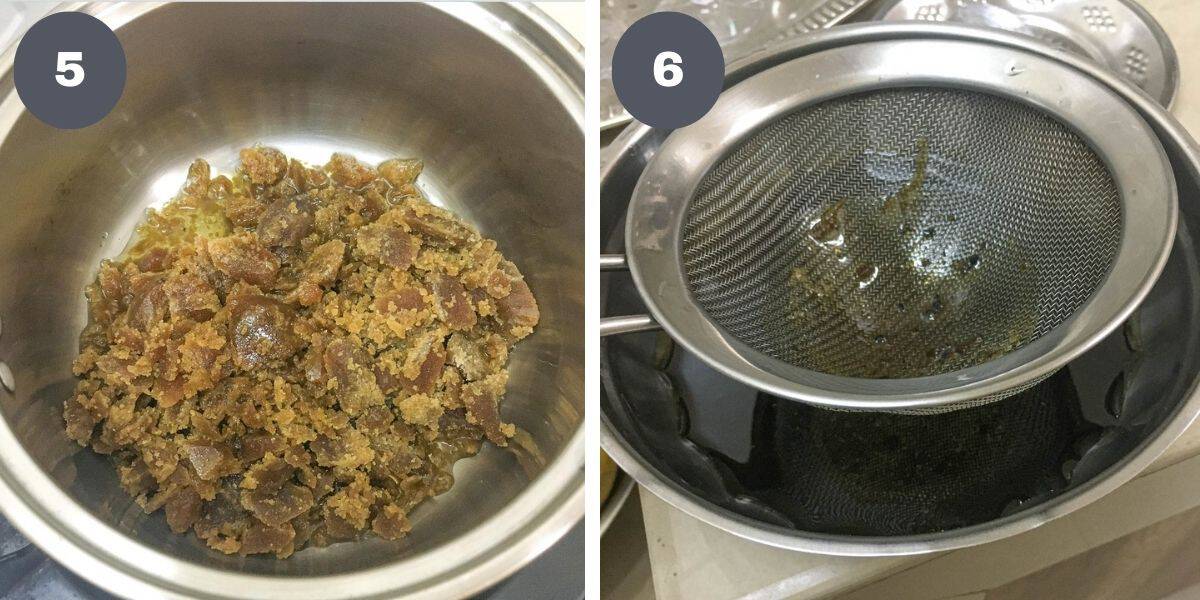
Put the sugar into a medium saucepan and add water (image 5).
Note: For easy dissolving, cut it into small pieces. Cutting is not easy, as the block can be hard. You can use a knife to grate it.
Place the pot over medium heat and cook until the palm sugar is all dissolved. Stir to prevent it from burning.
Once dissolved, remove from heat and strain to remove any residue (image 6). There is no need to wait until the syrup reaches a rolling boil. Let the palm sugar syrup cool down before using.
Step 3: Prepare the coconut milk. Pour the coconut milk into a small saucepan. Add salt and turn on the heat. Bring the milk to a light simmer and turn off the heat. Stir to dissolve the sugar and set aside to cool.
Step 4: Assemble the pudding. Remove the sago cups from the fridge.
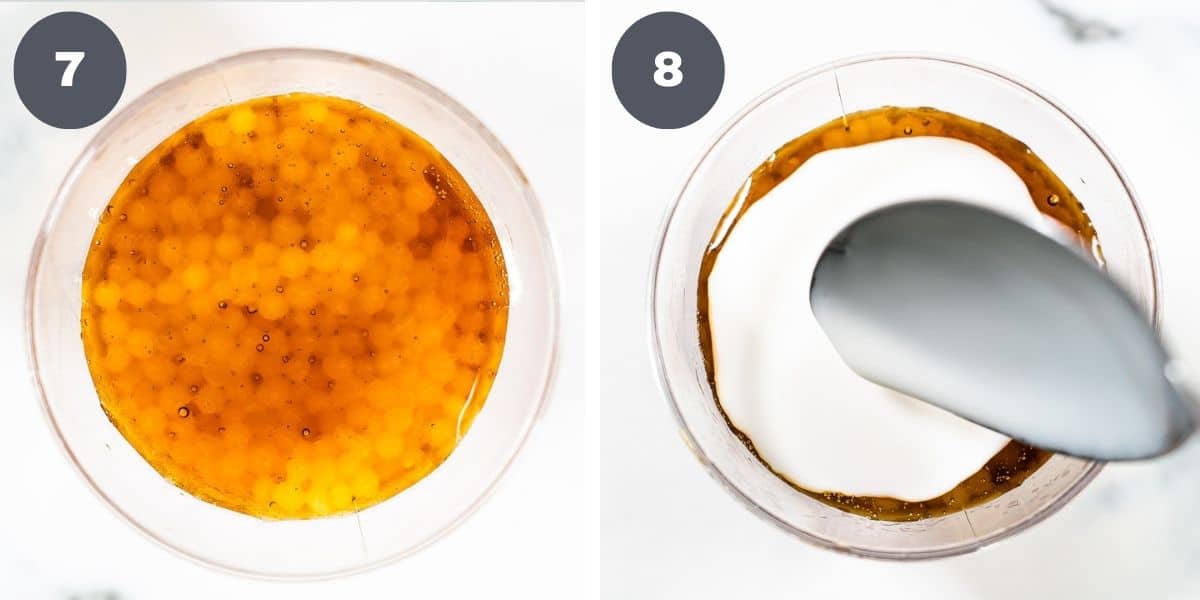
Pour about 1 tablespoon of syrup onto the cooked sago, followed by 1 tablespoon of coconut milk and serve (images 7 & 8).
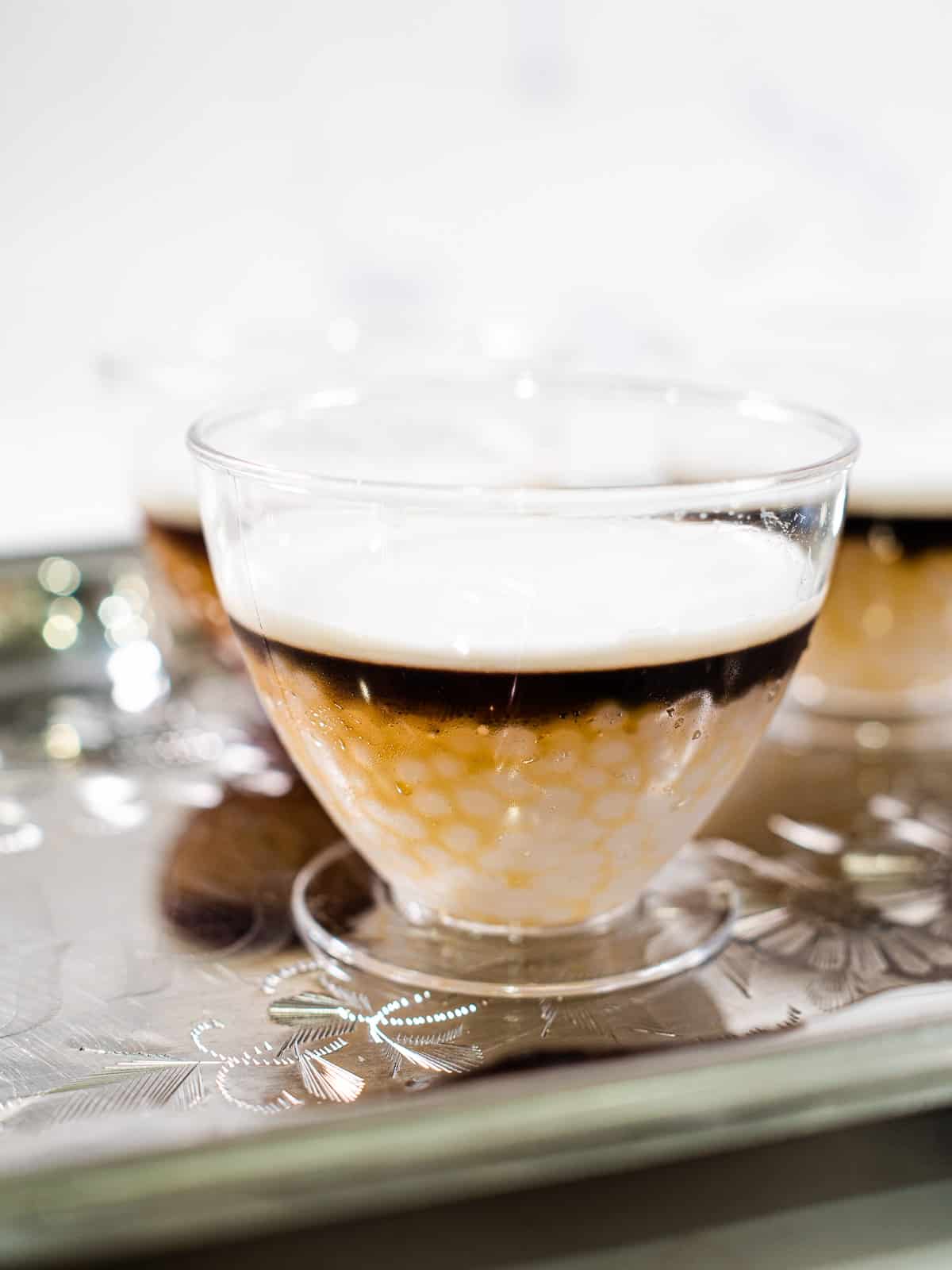
This sago pudding can be consumed immediately after it is made and assembled. If not serving immediately, keep the cooked sago, the syrup and the coconut milk chilled in the fridge separately. The pudding is best served within 2 days (keep the sago covered in a container to prevent it from drying out in the refrigerator). The palm sugar syrup can last for at least one week when stored in the refrigerator.
The syrup and milk are best poured onto the sago pudding right before serving. Coconut milk does not last well, so once mixed with milk, the sago pudding is best consumed on the same day.
💡Expert Tips
- Cook the sago with water over low heat until almost translucent. If the mixture gets too thick, add some hot water and continue to cook.
- Also, you would need to continuously stir the sago as it cooks as it has a tendency to stick to the bottom of the pan and burn.
- Overcooking the syrup can result in it becoming too thick and harden. Suffice if you heat it just until the sugar is dissolved. This is because the water I have indicated in the recipe is very little, and if you follow this, your syrup will be in the right consistency as soon as it is all dissolved.
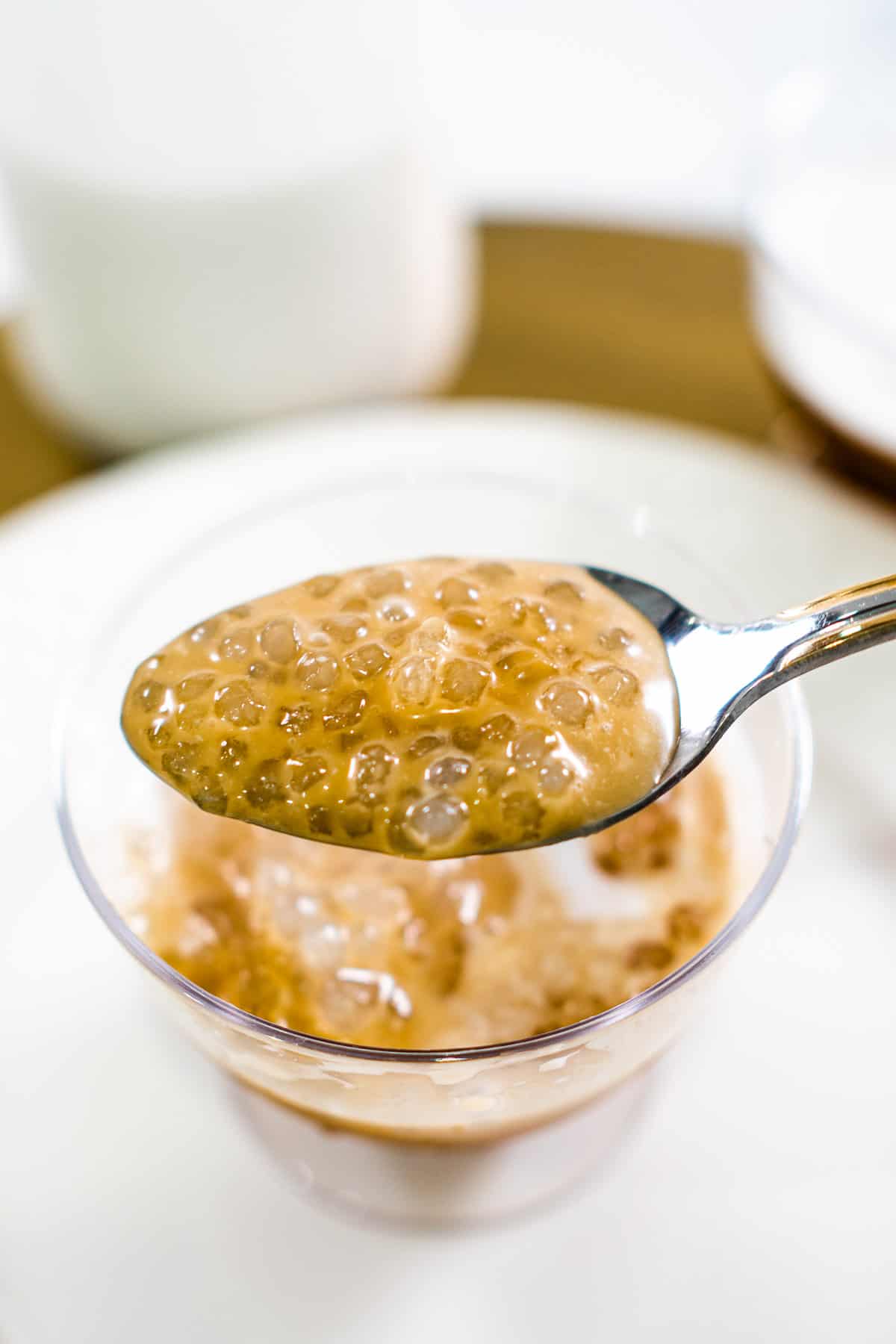
💭FAQs
Coconut milk is the white liquid extracted by blending and squeezing the white meat of a coconut.
Coconut cream is the thicker version of coconut milk and is often sold in cans. Unlike coconut milk, the coconut cream is of a scoopable consistency. It is not suitable for this sago pudding recipe as it is too thick.
Coconut water is the clear liquid that is present naturally inside the fruit.
For this sago pudding recipe, you need to use coconut milk. This can be purchased in cans or cartons, similar to coconut cream. But if you want to make your own coconut milk, place the coconut flesh into a food processer and add some water to it. Blend and then squeeze it in a muslin cloth to derive the creamy coconut milk.
If you are going to make your own coconut milk, remember that the more water you use, the more diluted the milk will be. For this recipe, you would need thick milk.
The best way to know if the sago pearls are done thoroughly is by making sure there are no white dots in the pot. When thoroughly cooked, the sago pearls will be totally translucent. When not fully cooked, you will see a small white dot in the center of the pearls.
There is a lot of starch in the pot (the water turns starchy from the starch in the sago), as you cook the sago, so you will not really be able to see the pearls. Instead, it will just appear like a gooey solution in the pot. This is perfectly normal.
Once cooked, transfer the hot sago mixture into a strainer and run cold water through them all the excess gooey starch is washed away and the pearls become visible.
Yes, you can. You can shape the sago for the pudding by putting them into molds. You cannot use intricately shaped molds but can use something like cupcake tins or small containers or bowls.
Shape the sago immediately after washing off the excess starch. Cooked sago tends to set into the shape of the container they are placed in after cooking, so if you leave them too long in the strainer, you will end up with lumpy sago clusters when you transfer them to the mold.
If this happens, simply run water through the pearls again to break them up and spoon them into the molds as soon as the water is all drained.
Let the sago set for a few hours, and then remove them from the mold (with a spoon or simply by tapping the sago out onto a plate). Pour the syrup and coconut milk and serve.
❤️More Recipes You Will Love
Do you like this recipe? Please leave a 5-star ⭐⭐⭐⭐⭐rating in the recipe card below and consider a review further down this page. I would love to hear from you. Thank you!
📖Recipe
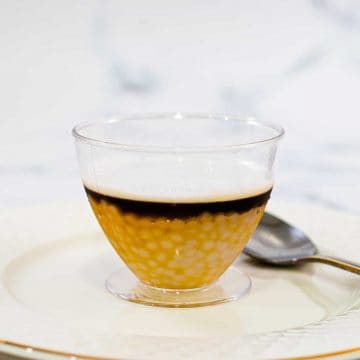
Sago Pudding with Coconut Milk (Sago Gula Melaka)
For best results, use the metrics measurements. US customary measurements have not been tested and are only meant for guide.
Ingredients
- 200 g sago pearls
- 200 g palm sugar (gula melaka)
- 180 ml coconut milk
- 700 ml water (to cook the sago)
- 5 tablespoon water (for the sugar syrup)
- ⅛ teaspoon salt
Instructions
- Measure 700ml water into a saucepan. Turn on the heat and bring the water to a boil.
- As soon as it starts boiling, add the sago pearls. Stir immediately to prevent them from clumping (see Note 1).
- Adjust the heat to low and continue to cook the sago. Keep stirring. As the sago cooks, you will be able to see dots of white in the solution. Continue cooking until the dots become lesser and smaller (see Notes 2 & 3).
- Turn off the heat and cover the saucepan. Let the sago rest in the residual heat for about 10 to 15 minutes to turn fully transparent.
- Transfer the cooked sago into a large sieve and run cold water through to remove all the excess starch.
- Drain out the water and spoon sago into prepared dessert cups. Chill until ready to serve.
- To make the syrup, cut the palm sugar into small pieces. Grate it if it is too hard to cut (see Note 4).
- Place it in a pan and add 5 tablespoons of water.
- Cook the syrup over low heat until it is completely dissolved. Stir to fasten the process.
- Once the sugar is all dissolved, remove the syrup from heat (see Note 5) and strain it. Leave it aside to cool completely.
- In a separate saucepan, add the coconut milk and salt. Heat up until the milk comes to a light simmer. Stir to dissolve the salt and turn off the heat. Set aside to cool completely.
- To serve the pudding, spoon 1 tablespoon of syrup into each sago filled dessert cup.
- Top it with 1 tablespoon of coconut milk and serve.
Notes
- Always boil the water first before adding the sago. This will immediately cook the outer layer of the sago and prevent the starch from the pearls from dissolving much.
- Cook the sago with water over low heat until almost translucent. If the mixture gets too thick, add some hot water and continue to cook.
- Also, you would need to continuously stir the sago as it cooks as it has a tendency to stick to the bottom of the pan and burn.
- For easy dissolving, cut it into small pieces. Cutting is not easy, as the block can be hard. You can use a knife to grate it.
- Overcooking the syrup can result in it becoming too thick and harden. Suffice if you heat it just until the sugar is dissolved. This is because the water I have indicated in the recipe is very little, and if you follow this, your syrup will be in the right consistency as soon as it is all dissolved.





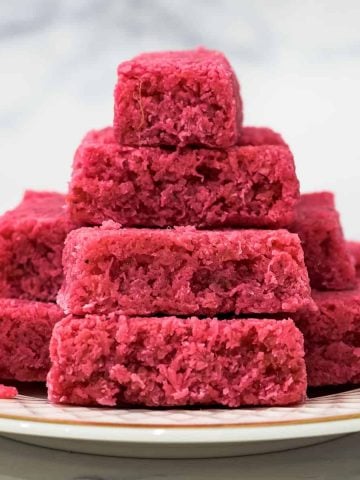
Kel
Family favourite… revisited for grandkids(adults now)
Honorine Franswah
Super tasty and easy to digest.